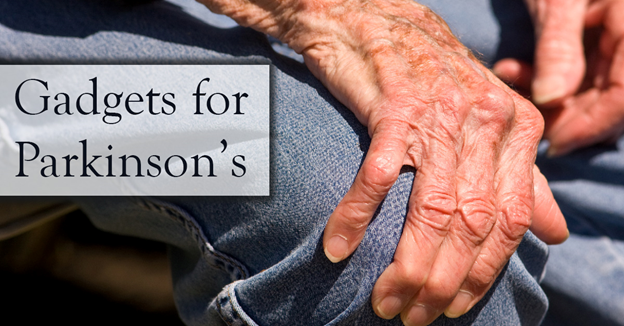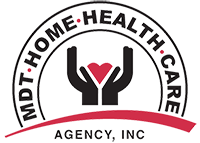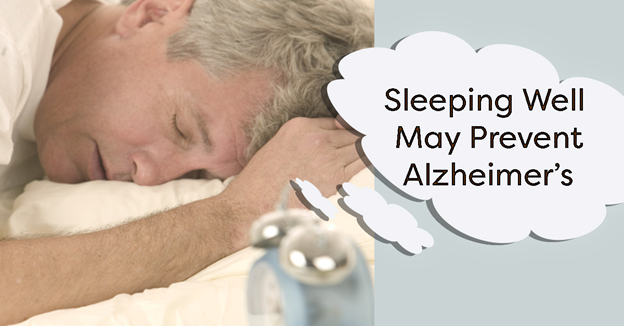Open enrollment for 2018 health plans is over. Unless you qualify for a special enrollment period, you are unable to obtain an individual insurance policy
until open enrollment begins in November1 1, 2018 for 2019 coverage.
Open enrollment for 2019 individual & family health plans |
Begins
Nov. 1, 2018 | Ends
Dec. 15, 2018 |
Here’s what you need to know for the open enrollment period for 2018 individual and family health insurance plans.
1. The open enrollment deadlines have changed
Open enrollment starts Nov. 1, 2018, and continues through Dec. 15, 2018. But your coverage doesn’t start immediately.
- If you sign up between Nov. 1, 2018, and Dec. 15, 2018, your coverage will start Jan. 1, 2019.
In 2018, the federal government’s current rule changes the open enrollment period from 3 months (around 90 days), as it was the last two year, to a mere 45 days. However, some states extended the time that people have to buy health insurance. For 2019 coverage, only a few states have set extended dates. These states and dates are:
- California – Oct. 15 to Jan. 15
- D.C. – Oct. 15 to Jan. 31
- Minnesota – Nov. 1 to Jan. 13
If you buy after the Dec. 15 date in the states that are extending the enrollment period, you’ll need to check to see when the coverage will start as most still require you to obtain your plan by Dec. 15 for it to start on Jan. 1, 2018. If you buy after Dec. 15 your plan’s start date may be Feb. 1 or March 1, 2019.
No matter how long you have in your area, it’s important to not delay in choosing a plan once open enrollment starts.
People who qualify for Medicaid or the Children’s Health Insurance Program (CHIP) can enroll at any time of the year. These are state-federal programs for people with limited incomes or disabilities.
2. You must sign up if you don’t have health insurance from another source
You need to sign up for health insurance during open enrollment if:
- You don’t have health insurance through your employer or your spouse’s employer.
- You don’t have government coverage (such as veterans, Medicare and Medicaid)
- You’re over age 26 and can no longer be on a parent’s health insurance.
- You qualify for tax credits to help you pay for health insurance coverage.
3. This is the time to make changes to your current plan
What you can do during open enrollment:
- You can renew your current individual/family health insurance plan.
- You can choose a new health insurance plan through the marketplace in your state or through private insurance.
If you are currently enrolled in a marketplace health insurance plan, it will automatically renew. However, the plan may make changes to its provider network, copays, co-insurance and drug coverage. Your plan must send you a notice of any changes it will make for 2019.
Take time to read the notice to see what it means for you. Make certain your doctors and preferred hospital are still in your network. Be aware, you may be able to use out-of-network doctors and hospitals, if you’re willing to pay more. In some cases, you might not be covered at all if you go out of network.
Your prescription drug coverage also could change. The plan may no longer cover the drugs you take to manage your chronic conditions. It’s important that you check your plan’s drug benefits for 2019 before you allow it to renew. You may need to find a different plan for your needs and now’s the time to do it.
Health plans must provide an online link to the list of drugs they will cover, known as formularies.
4. Marketplace open enrollment is only for health insurance
If you qualify for employer-sponsored health insurance, you will likely want to buy health insurance through your employer and will not be affected by the fall open enrollment period for the government-run marketplaces. Ask your employer when its open enrollment period is.
Open enrollment is not for auto, life insurance or long-term care insurance. Those are completely separate products that you can buy on your own any time of year. It’s also not for Medicare. The fall open enrollment period for Medicare is Oct. 15 to Dec. 7, 2018.
5. If you miss open enrollment, you may have to wait for a year to sign up
If you miss open enrollment on your state’s health insurance exchange, you won’t be able to sign up for coverage unless you qualify for a special enrollment period.
Here’s what might trigger a special enrollment period: divorce, marriage, birth or adoption of a child, death of a spouse or partner that leaves you without health insurance, your spouse or partner who has you covered loses his/her job and health insurance, you lose your job and with it your health insurance, your hours are cut making you ineligible for your employer’s health insurance plan, or you are in an HMO and move outside its coverage area.
Under the Affordable Care Act, you must have health insurance or pay a penalty at tax time.
6. Federal penalties for not having health insurance – done away with for 2019
Health plans that don’t count as “coverage” |
If your state continues with a penalty you it is possible you will still pay a penalty for being uninsured if you have only these types of plans:- Coverage only for vision care or dental care.
- Workers compensation.
- Insurance that covers only a specific disease or condition, such as cancer insurance.
- Plans that offer only discounts on medical services.
|
For the 2018 tax year, the penalty will remain at 2.5 percent of your income or flat amounts (whichever is more). The 2018 flat and maximum amounts have not been published yet as the government will adjust for inflation. In 2017, the flat amounts were $695 per adult and $347.50 per child. The maximum penalty was set at $2,085.
If you owe a penalty, it will be taken from your 2018 tax refund. Unlike nonpayment of child support or other activities, the federal law prohibits the government from garnishing your wages or filing liens to collect an insurance penalty.
The ACA individual mandate penalty for not having health insurance has been eliminated for 2019 and beyond. However, some states may replace it with a state-based mandate for individuals to have health insurance or receive a penalty. Massachusetts has had such a mandate since 2006 and New Jersey is starting the mandate in 2019. Other states may follow suit, so be aware of what your specific state may require.
7. You have a choice of four levels of individual/family health insurance plans
Plans in the health insurance marketplace are divided primarily into four categories:
- Bronze – highest out-of-pocket expenses for services (lower premiums)
- Silver
- Gold
- Platinum – least out-of-pocket expenses for services (higher premiums)
The metal level indicates how much cost-sharing they require, explains Bob Fredericks of Fredericks Benefits in Redlands, Calif. Cost-sharing includes deductibles, copays and co-insurance that you must pay until you reach your out-of-pocket maximum limit.
Bronze plans have the highest deductibles and other cost-sharing, meaning more spent out of pocket for you when you use your health care, Fredericks says. Silver plans have lower cost-sharing than bronze, and gold plans even lower than silver. Platinum plans have the lowest deductibles and copays, etc.
Generally, the more you pay in premiums the lower your cost-sharing.
Which plan is right for you depends on how much you’ll need health care in 2018. If you go to doctors frequently to help manage a chronic condition, you likely want a plan with lower copays and deductibles. If you’re pretty healthy, you may be better off signing up for a plan with lower premiums but higher costs when you use your insurance.
Of course, it’s a gamble, because you never know what’s going to happen, Fredericks says. When it comes to bronze plans, Fredericks’ advice: “Caveat emptor.” (Buyer beware.) Once you sign up for a level of coverage, you are locked into that level for the year. If you choose a bronze plan and discover you need surgery, you can’t change to a plan with a lower deductible.
Health insurers also offer plans outside the marketplace that have a variety of benefit choices.
8. All health plans must cover 10 essential benefits
All health plans, no matter the level, must provide some coverage for at least 10 essential benefits. They are:
- Outpatient care including chronic disease management
- Emergency care
- Hospitalization
- Pregnancy and newborn care
- Mental health and substance abuse services
- Prescription drugs
- Rehabilitation services and devices
- Lab tests
- Preventive and wellness services
- Dental and vision care for children
The level of coverage for these services can vary. All the plans in the marketplace must provide consumers with a brief, understandable description of what they cover and how their plan works. The Summary of Benefits and Coverage (SBC) must be posted on the plan’s website. Check out the SBCs for the different plans you are considering. This is a good way to compare plans and benefits.
9. Your family size and income determines your eligibility for tax credits
2018 federal poverty level guidelines (applies to 2019 coverage) |
| Persons in Household | 2017 federal poverty level for continental U.S. | Premium subsidy threshold (400% of federal poverty level) |
| 1 | $12,140 | $48,560 |
| 2 | $16,460 | $65,840 |
| 3 | $20,780 | $83,120 |
| 4 | $25,100 | $100,400 |
| 5 | $29,420 | $117,680 |
| 6 | $33,740 | $134,960 |
| 7 | $38,060 | $152,240 |
| 8 | $42,380 | $169,520 |
You may qualify for a premium tax credit which is based on income and family size. To qualify, your family income must fall between 100 and 400 percent of the federal poverty level (FPL).
For 2019 coverage for a family of four, the income bracket would be $25,100 to $100,400 to quality for these credits. (The government uses FPL standards from the previous year to determine eligibility.)
If you qualify, the credits can be applied to your monthly insurance premiums. If your income changes during the year and you no longer qualify for the credits when you file your taxes, you will have to repay.
10. If you suffered a hardship, you may not be required to buy health insurance
You may not be required to buy health insurance during open enrollment if you qualify for a hardship exemption. These include:
- Being uninsured for less than three months of the year.
- You are the victim of domestic violence or suffered from a natural or human-caused disaster such as a fire or flood that damaged your property substantially.
- A close family member recently died or you had unexpected expenses related to caring for an elderly, ill or disabled family member.
- You have been evicted from your home or suffered bankruptcy.
- You found you are ineligible for Medicaid because your state did not expand eligibility under Obamacare.
- You are not in the U.S. legally.
- You are incarcerated — either detained or in jail.
You also are exempt if you are a member of a recognized religious sect that has religious objections to insurance.
Finally, you aren’t required to have health insurance if you live abroad for more than 330 days out of the year.










